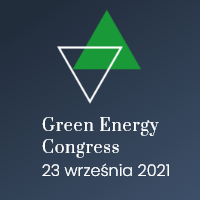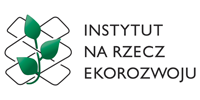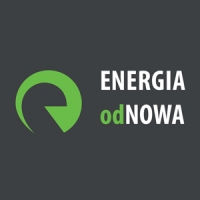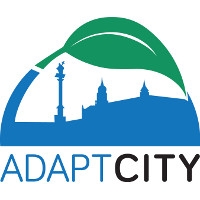- Kalendarium
-
Debaty
- Czy Polska będzie "Fit for 55%"?
- Efektywność energetyczna i odnawialne źródła energii w budynku wielorodzinnym
- Gospodarowanie wodą w budynku wielorodzinnym
- Jak przeciwdziałać ubóstwu energetycznemu i zanieczyszczeniom powietrza
- Szanse rozwoju energetyki morskiej w Polsce
- E-mobility – czy tylko samochód elektryczny?
- Zielone finansowanie
- Gospodarka o obiegu zamkniętym
- Czy planowanie przestrzenne w Polsce da się naprawić?
- Czy transformacja energetyczna w Polsce oznacza wzrost bezrobocia?
- Roślinność na wokół i w budynku wielorodzinnym
- Fundusze unijne na gospodarkę niskoemisyjną
- Ekologia w modzie i tekstyliach
- Seminarium naukowe: Co ekstremalne zjawiska pogodowe mówią nam o zmianach klimatu?
- Woda w mieście - jak ją zagospodarować
- Senior czuje dobry klimat
- Przyszłość ciepłownictwa w Polsce
- Jak zmniejszyć ubóstwo energetyczne?
- Jak osiągnąć neutralny dla klimatu transport w ciągu najbliższych 30 lat?
- Jaki rynek pracy po węglu?
- Czy polska gospodarka może działać bez węgla?
- Jaką energetykę warto dotować?
- Dlaczego węgiel tanieje?
- Zielone miejsca pracy
- Miasto bez samochodu?
- Śląsk - co po węglu?
- Ustawa o energetyce odnawialnej
- Ile powinien kosztować prąd
- Szczyt klimatyczny w Limie
- Węgiel a zdrowie
- Efektywność szansą dla gospodarki
- Energetyka rozproszona
- Polska wobec celów 2030
- Biblioteka
- Wideo
- Patronaty
- Projekty
- O serwisie
- Opinie
Dofinansowania i dotacje
Energy Efficiency – the first fuel for the EU Economy (18273)
2015-03-02Drukuj
This report is the final delivery of EEFIG summarizing its work and thinking over the 16 months between October 2013 and February 2015. During this time EEFIG has met nearly every month and addressed energy efficiency investments, their drivers and trends, for buildings, industry and SMEs in the European Union (EU).
Energy Efficiency Investment is Strategically Important for the European Union
Energy efficiency investment is the most cost effective manner to reduce the EU’s reliance, and expenditure, on energy imports costing over €400 billion a year. While energy efficiency investments have been gradually taking place for decades, the EU today finds itself in a place where these investments have become strategically important due to the high level of energy imports required by the EU bloc, energy price instability and the need to transition to a competitive low carbon and resilient economy.
Energy efficiency investing has a fundamental and beneficial role to play in the transition towards a more competitive, secure and sustainable energy system with an internal energy market at its core. The Energy Efficiency Financial Institutions Group (“EFFIG”) identifies the need to engage multiple stakeholder groups, scale-up the use of several financial instruments within a clear and enforced “carrot and stick” legislative framework. This report identifies a number of approaches and instruments that have proven to encourage investments and multiple market barriers that stand in the way of an energy efficient Europe.
The scaling up of these successful approaches and removal of these barriers will require a range of identified actions from policy makers and market stakeholders to mobilize the millions of different actors in the EU that will build, finance and benefit from this market. This needs to be driven by an active structural reform agenda that can deliver economies of scale to drive down costs and improve supply capacity and ensure new opportunities for business and investment growth exist across all Member States.
A Historic level of Public-private Collaboration is Required
The European Fund for Strategic Investments (EFSI) can put energy efficiency first. In Europe investment levels are around 15% below their 2007 peak. Europe’s new Investment Plan aims to address this2. EFFIG findings support the Plan’s position that there is no single or simple answer to how to boost growth and that addressing both the demand and supply sides of the economy is required. Member States have a clear role to play in pursuing the necessary structural reforms, exercising fiscal responsibility and providing regulatory certainty to boost investment in support of jobs and growth. In this context, energy efficiency is the first fuel because it is competitive, cost effective to produce and widely available. For these reasons, EEFIG considers that the Investment Plan should include a clear focus on improving the energy productivity of Europe as a key driver of growth with funds earmarked for energy efficiency investments. In doing so, Europe can unlock the multiple benefits of energy efficiency investments including energy security, competitiveness, social and territorial cohesion, job creation, well-being and greenhouse gas emissions reductions.
A historic level of public-private collaboration is required to deliver multiples of existing energy efficiency investment flows by 2030. EEFIG identifies various financial instruments that need to be scaled up and makes a strong case for using public funds to blend with private sector investment to address the risks and achieve the scale of financing needed. This report connects the financial instruments with enabling policies in specific sub-sectors in buildings and industry. Presently, there are insufficient public and private investments in energy efficiency in buildings, industry and in SMEs. If this trend continues then EU Member States are at risk of missing their 2020 and longer-term energy efficiency targets and their economies will be deprived from the boost energy efficiency investment can provide. EEFIG estimates that a five-fold increase in private energy efficiency investments in European buildings is required by 2030. The scale-up of smart financial instruments is required and that they are tailored, by sub-sector, to encourage a long-term and cost effective reduction of energy use in Europe’s buildings, industry and SMEs.
Oil and Gas Price volatility offers an Opportunity to Build Resilience
The dramatic fall in the oil price, and its likely impact in lower European gas prices, well highlights the need for Europe to have buildings, industry and SMEs whose competitiveness and running costs are better insulated from the uncertainties and volatility created by commodity price shocks. This welcome respite will lower Europe’s external fuel bill and provide much needed public and private investment capacity to increase the resilience of EU buildings, industry and SMEs to higher prices, and volatility, through long-term energy efficiency investments. Current carbon prices (€7/ton CO2e in the EU Emissions Trading System) are having little direct impact on energy efficiency investment levels in industry or buildings. However, EEFIG sees lower oil and gas prices as providing a welcome window for policy makers to enforce existing regulations, use fiscal tools to incentivise energy efficiency and reduce distorting “volume purchase” subsidies (where relevant) to large energy consumers and recycle those funds into greater support for energy efficiency, resilience and long-term competitiveness investments.
EEFIG’s Uniquely Engaged Process Delivered Clear and Consensus Results
In late 2013, EEFIG (containing over 120 active expert participants) was jointly convened by the European Commission and the United Nations Environment Programme Finance Initiative (“UNEP FI”) to bring together their expertise to address the need to increase the scale of energy efficiency investments across the EU. This final report represents the consensus and shared views of its expert members from over sixteen months of collaborative work in a process containing several steps: a literature review; characterization of the market and rationale for energy efficiency investments in buildings, industry and SMEs; identification and definition of the key drivers of supply and demand for energy efficiency investments for each sector and prioritization of these by buildings or corporate segment; identification of the instruments and approaches required to stimulate energy efficiency investments each segment and concluding with a set of clear recommendations both to policy-makers and market participants.
The results of this process can be summarised as follows:
EEFIG identifies a very strong economic, social and competitive rationale for the up-scaling of energy efficiency investments in buildings and industry in the EU;
EEFIG sees a strong economic opportunity that is deliverable by boosting both the drivers of demand for and supply of energy efficiency investments in buildings and industry sub-segments;
Whilst there is no single solution, EEFIG identifies a framework of cross-cutting measures as well as individual requirements to support investments for each market segment, while noting national differences especially in low income countries;
In its analysis of the different tools and approaches, EEFIG identifies those which can be led by market stakeholders and those which must be policy-led. Both require work in parallel to deliver the targeted increase in energy efficiency investments;
For buildings and industry EEFIG develops separate analysis and recommendations to policy makers and market participants to increase energy efficiency investment rates and flows;
EEFIG concludes by highlighting seven key themes which emerge from both buildings and industry and SME analysis and provide the European Commission with final recommendations for its consideration.
EEFIG’s Presents its Key Market and Policy Recommendations
EEFIG considers that its recommendations for market and policy-led actions should be considered in the context of broader structural reforms needed to improve the competitiveness of the EU economy and ensure the Investment Plan for Europe has a sustained impact on the EU 2030 climate and energy strategy. These actions include but are not limited to the following:
Market actions:
Improvement of buildings certification methodologies and Energy Performance Certificate standards and the implementation of minimum performance standards upon building upgrade, sale or rental to help build a vibrant and comparable pan-European market for buildings energy efficiency investments;
Improvement of information flows by developing an open-source energy and cost database for buildings and effective systems for sharing information and technical experience within industry sectors;
Facilitate innovation such as on-bill repayment and on-tax finance mechanisms by creating pilots to help grow energy efficiency investments in commercial and residential buildings;
Develop a project rating system to provide a transparent assessment of the technical and financial risks of buildings energy renovation projects and their contracting structure
Economic actions:
Streamlining, blending and optimizing the use of European Structural and Investment Funds, Horizon 2020 and EU ETS revenues for energy efficiency investments through ensuring their better linkage to National Building Renovation Strategies together with National Energy Efficiency Funds and energy market reforms;
Increase the use of targeted fiscal instruments to motivate both building owners and companies to prioritize energy efficiency during their natural replacement cycle;
Review of public and private accounting treatment of Energy Performance Contracts;
Further expert examination of the discount rates used in energy modelling, policy-making and investment decision-making, to adequately balance the benefits and risks of energy efficiency.
Financial actions:
Development of a common set of procedures and standards for energy efficiency and buildings renovation underwriting for both debt and equity investments;
Adjustment to financial regulatory frameworks to better support capital market innovation, ensure that risk assessment and related capital requirements for long-term energy efficiency investments correctly reflect their risks and develop market potential for green bonds, citizen financing, factoring funds for Energy Performance Contracts and other more innovative sources of financing for energy efficiency;
Address barriers to expanding the green mortgage market, including by examining how to include energy costs and energy efficiency potential in mortgage affordability calculations;
Ensure that new regulatory frameworks for financial institutions (Solvency II and Basel III) do not prejudice energy efficiency investments ;
Ensure that public technical assistance and project development assistance facilities are compatible and can be easily combined with market-based and concessional funding by qualified and experienced financial institutions;
Ensure that public refinancing facilities, like those operated by the European Central Bank, confirm eligibility for financial instruments relating to energy efficiency.
Institutional actions:
Increase the capacity to facilitate ongoing project development assistance to all relevant actors and technical assistance to relevant public sector bodies and entities for development and aggregation of energy efficiency investments in SMEs and households;
Review of the public authority procurement rules to better value lower operational costs as a part of their tender assessment processes;
Institutional capacity to implement National Buildings Renovation Roadmaps that enable long-term planning and supply chain scale-up to deliver and finance ambitious buildings renovation programmes;
Increased focus on regulatory frameworks which support strong corporate energy efficiency investment choices at key points in their investment cycle (connecting with energy audits);
Review to ensure that current State Aid rules do not unnecessarily burden accelerated energy efficiency investing and the up-scaling of public-private financial instruments. The report develops and summarises the above actions and recommendations for policy makers and markets participants by sector in the following tables.
Podziel się swoją opinią
Za treść materiału odpowiada wyłącznie Fundacja – Instytut na Rzecz Ekorozwoju


Wybierz dział
Newsletter
Patronaty
Kalendarium
- PN
- WT
- ŚR
- CZ
- PT
- SO
- ND
Warning: Illegal string offset 'dzien' in /tpl_c/%%58^58D^58DE6355%%kalendarz.tpl.php on line 31
0
Warning: Illegal string offset 'dzien' in /tpl_c/%%58^58D^58DE6355%%kalendarz.tpl.php on line 31
0
Warning: Illegal string offset 'dzien' in /tpl_c/%%58^58D^58DE6355%%kalendarz.tpl.php on line 31
0
Warning: Illegal string offset 'dzien' in /tpl_c/%%58^58D^58DE6355%%kalendarz.tpl.php on line 31
0- 1
- 2
- 3
- 4
- 5
- 6
- 7
- 8
- 9
- 10
- 11
- 12
- 13
- 14
- 15
- 16
- 17
- 18
- 19
- 20
- 21
- 22
- 23
- 24
- 25
- 26
- 27
- 28
- 29
- 30
Projekty
 |
ChronmyKlimat.pl wersja 2.0 – portal na temat zmian klimatu dla społeczeństwa i biznesu. © Copyright Fundacja Instytut na rzecz Ekorozwoju |
| Redakcja: ul. Nabielaka 15 lok. 1, 00-743 Warszawa, tel. +48 +22 8510402, -03, -04, fax +48 +22 8510400, portal@chronmyklimat.pl |
RSS
Polityka prywatności









